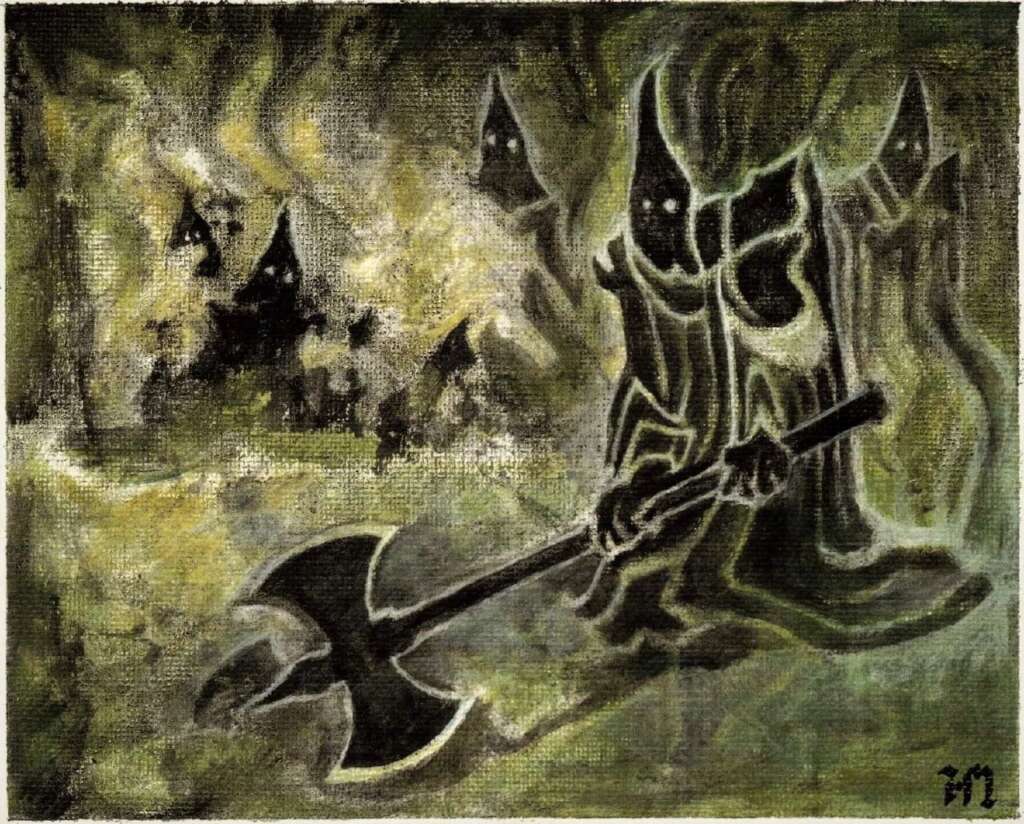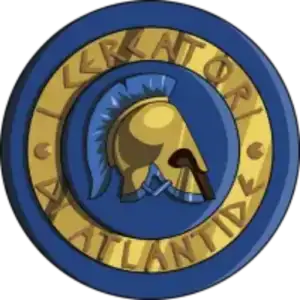In questo articolo tratteremo la scelta di Wizards of the Coast di bandire carte e artisti dai loro database, giochi e collaborazioni.
Le proteste scoppiate negli Stati Uniti dal 25 maggio hanno avuto e stanno avendo forti ripercussioni su tutta la società americana.
Molte aziende stanno modificando o ritirando i propri prodotti che potrebbero attirare proteste su di sé: a partire dalla HBO con Via col Vento, che è stato reinserito successivamente in catalogo con un disclaimer iniziale, passando per Hazzard, ma anche i poveri Looney Tunes non ne sono usciti del tutto indenni.
Wizards of the Coast, l’azienda produttrice di Magic the Gathering, non è stata da meno.
Il caso delle carte bandite dai formati della Wizards of the Coast
Tramite un articolo, la Wizards of the Coast, ha annunciato il ban immediato di alcune carte in tutti i formati, e la rimozione delle loro immagini dal Gatherer. Per chi non lo sapesse il Gatherer è il database ufficiale di tutte le carte uscite per Magic: the Gathering dal principio del gioco ad oggi
Ovviamente subito dopo sono scoppiate le proteste e i commenti, più o meno giustificati, ma soprattutto più o meno informati.
In questo articolo ho quindi cercato di radunare alcune informazioni che potrebbero spiegare le motivazioni dietro alla scelta di quelle carte, sebbene non ci sia stato mai nessun comunicato ufficiale da parte della Wizards of the Coast.
Prendiamo in esame le carte in questione

Invoke Prejudice e la somiglianza col KKK
Cominciamo da Invoke Prejudice.
Partendo dal suo ID (codice identificativo) sul Gatherer, 1488, la scena raffigurata aveva suscitato polemiche già da tempo, in quanto i personaggi mostravano una somiglianza col KKK. Il fatto che l’autore abbia legami con organizzazioni suprematiste e neo-naziste non ha esattamente aiutato.
Qualche giorno dopo il direttore artistico che aveva approvato la carta, ha dato il suo punto di vista sull’argomento: la creazione di quella immagine era riferita agli esecutori della Inquisizione Spagnola, anche se riconosceva la somiglianza col KKK, che nella sua intenzione voleva essere una citazione ironica a chi diffonde pregiudizi.
Cleanse e Imprison: riferimenti al razzismo e alla tratta degli schiavi
Le carte Cleanse e Imprison fanno più chiaramente riferimento al razzismo verso gli afroamericani. Nel primo caso abbiamo una sfortunata coincidenza tra nome della carta, il collegamento alle pulizie etniche che viene naturale, effetto e testo di colore. Il foul beast nel testo potrebbe non essere stata una scelta felicissima, sotto questo punto di vista.
L’insieme di questi elementi potrebbe essere ciò che ha portato alla scelta di questa carta.
Nel secondo caso abbiamo una persona di carnagione scura ristretta in uno spazio angusto, in una posizione che ne deforma la postura. Il collegamento è naturalmente alla tratta degli schiavi e le loro condizioni durante le traversate atlantiche. L’aggiunta della maschera sul volto rendono impossibile qualsiasi fraintendimento.

Pradesh Gypsies: dispregiativo verso i Rom
Con Pradesh Gypsies abbiamo un problema sul nome. Infatti, negli Stati Uniti il termine Gypsy viene spesso usato in maniera dispregiativa, similmente allo zingaro italiano.
Per quanto il termine possa indicare un esponente di etnia Rom, è facile capire come questa rimozione possa risparmiare molti grattacapi a Wizard.
Stone-Throwing-Devils: irrispettosa verso la cultura islamica
Stone-Throwing-Devils è, a mio parere, la carta col riferimento più affascinante e che, prima di fare delle ricerche, ignoravo completamente.
Lo Stoning of the Devil è un rito che avviene durante il pellegrinaggio islamico verso La Mecca. Consiste nel lancio di pietre contro tre muri, i jamarāt, che rappresentano le tentazioni del diavolo. Nell’immagine abbiamo una perversione del rito originale, in quanto vediamo che sono i diavoli coloro che lanciano pietre, forse contro i fedeli islamici in pellegrinaggio o proprio una associazione al fatto che siano i fedeli islamici ad essere il diavolo. Una scelta senza dubbio infelice e soprattutto non rispettosa della cultura e della religione islamica

Jihad e Crusade: un discorso più complicato
Terminiamo con Jihad e Crusade. Il discorso diventa complicato, in quanto non è chiaramente possibile sfruttare la motivazione razzista, quindi dobbiamo per forza fare ipotesi senza poter appoggiarci a nulla di certo.
Il Jihad, la Guerra Santa, ha da sempre avuto nella storia varie interpretazioni, e la discussione a riguardo è sempre stata presente nella comunità islamica. Scendere nel particolare del pensiero de il Jihad offesivo o difensivo potrebbe essere complicato da comprendere per noi europei e sono certo che persone più informate di me ve lo possano spiegare.
In ogni caso, a partire dalle guerre di conquista dell’Impero Ottomano, fino alle più moderne attività terroristiche di Al Qaida e dell’ISIS, il termine in Occidente ha sempre avuto connotazioni negative.
Molto simile è il discorso per Crusade. Le Crociate sono la perfetta trasposizione cristiana della Guerra Santa, e tutte sono state eventi storici particolarmente sanguinari e violenti.
Il fatto che gli effetti di queste carte sia poi legato al colore bianco è stato probabilmente la motivazione decisiva per la loro rimozione; se pensiamo infatti a carte come Honor of the Pure, dove è assente qualsiasi riferimento storico e si sono salvate dalla “purga”, possiamo dedurre che Wizard of the Coast abbia voluto dissociarsi da qualsiasi riferimento col proprio gioco di carte.
Un commento sulla damnatio memoriae
Personalmente non sono un grande fan della damnatio memoriae, soprattutto se va a colpire alcune carte con motivazioni dubbie e, soprattutto, non spiegate. Avrei sicuramente apprezzato se l’azienda avesse pubblicato anche un articolo con le spiegazioni ufficiali sulle scelte fatte, cosa che avrebbe potuto evitare molte discussioni senza fondamento che sono avvenute su internet senza alcun fondamento.
Ma dato che quest’ultima, e immagino soprattutto a Hasbro, non sia interessata molto delle mie idee personali, ma più al suo valore aziendale, comprendo benissimo questa scelta e le motivazioni che hanno portato ad essa.

La scelta di bandire gli artisti da parte di Wizards of the Coast
Ma questo non è l’unico annuncio che Wizards of the Coast ha fatto.
Durante un Weekly MTG, è stato rivelato pubblicamente che la collaborazione con Terese Nielsen ha raggiunto il termine.
“We haven’t commissioned new art from Terese Nielsen in quite a while, the last product that will have any reprint art from her is this Fall with Zendikar Rising”
Parole di Doug Beyer, Principal Game Designer del Worldbuilding team di Magic: the Gathering. I lettori con buona memoria si ricorderanno di quando Terese Nielsen ha fatto parlare di se in seguito a interazioni sui social con comunità di estrema destra e complottiste. Avevamo anche avuto modo di parlare su queste pagine di una polemica nata durante il Mythic Championship che prese il nome di Terragate.
A quanto pare, la situazione e le dichiarazioni successive di Nielsen non sono bastate, visto che le proteste si erano riaccese ad ogni apparizione di una sua illustrazione in una nuova espansione, da Modern Horizon alla più recente ristampa di Rhystic Studies in JumpStart, carta di cui esiste una illustrazione alternativa.
La risposta di Beyer ci fa capire che Wizards of the Coast aveva ascoltato le proteste già da tempo, e aveva già agito di conseguenza. L’annuncio è solo la constatazione di una scelta aziendale che era già stata fatta da tempo.
Commento personale sulla vicenda
Personalmente sono triste per questa scelta. Le illustrazioni di Terese Nielsen sono, a buon diritto tra le più famose di Magic: the Gathering. Vorrei ricordare anche che aveva anche disegnato le carte promo del San Diego Comicon del 2018. Ho un debole particolare per Descendant’s Path. Però è vero: riuscire a separare l’arte dall’artista è sempre stata un’impresa complicata, e in questi tempi il tema è più scottante che mai.
E come per il discorso precedente dei ban, l’interesse aziendale di Wizards of the Coast ha fatto sì che questa scelta fosse preferibile a continuare la collaborazione con Terese Nielsen, in modo da eliminare direttamente la possibilità di ulteriori proteste.
Ma questa disegnatrice non è l’unica artista che saluterà il panorama di Magic: The Gathering.

Il bando di Noah Bradley
Qualche giorno fa Wizard of the Coast ha pubblicato un nuovo comunicato annunciando la fine della collaborazione con un altro artista molto amato dal pubblico, Noah Bradley.
Ma cosa è successo?
In seguito ad alcuni tweet di accusa, Bradley ha pubblicato un post sul suo profilo Twitter dove parla di comportamenti predatori verso le donne. Ovviamente le risposte forti verso Bradley non si sono fatte mancare, e l’azienda è intervenuta prontamente col comunicato per distanziarsi dall’artista.
Per quanto rimanga triste per l’accaduto, in quanto sono un grande fan delle illustrazioni di Bradley, non posso che riconoscere la bontà della decisione presa. Il tema delle molestie sessuali è sempre stato estremamente delicato, soprattutto per le aziende statunitensi. Ricordiamo il caso Weinstein, probabilmente uno dei più famosi, e, in questo periodo, si stanno moltiplicando le accuse simili nel mondo dei videogiochi e di Twitch.
Le azioni compiute da Noah Bradley non sono scusabili o giustificabili, e non sarà certo una lettera di scuse ad aiutare le vittime; il percorso per la redenzione è lungo e impegnativo come James Gunn sa bene.
L’importanza di concedere una redenzione futura
Detto questo, vorrei fare una piccola precisazione. Seguendo le vicende e i pareri dei vari personaggi del mondo di MtGTwitter, mi pare di aver notato una cosa che mi ha preoccupato: il rifiuto di concedere questa futura possibilità di redenzione.
Ho letto molti discorsi che affermavano la necessità di un “esilio artistico” a vita di Bradley, e questi discorsi mi hanno onestamente disgustato. Non so se si tratti di una mentalità statunitense o no, ma sono un convinto sostenitore del valore educativo della giustizia. Uno dei motivi per cui è stata abolita la condanna a morte è proprio la mancanza di qualsiasi valore educativo nell’esecuzione. Certo, il fatto che la pena di morte sia ancora presente nella maggior parte degli Stati Uniti dovrebbe dar molto da pensare.
Questo non vuole essere un discorso apologetico verso Noah Bradley, ma si tratta di diritti che dovrebbero essere basilari per ognuno. Non è giusto condannare a vita un uomo per un suo, per quanto grave, errore, ed è ancora più grave riversare le colpe di un individuo su persone vicine e familiari. Subito dopo le accuse verso Noah, sono partite quelle verso la moglie, Rachel, anche lei artista, che dopo varie repliche su Twitter ha lasciato una sua dichiarazione.
Conclusioni
Tempo addietro, scorrendo le pagine di questo sito, lessi di come l’autore del precedente articolo concedesse il beneficio del dubbio. Oggi, dopo tutto questo che sta succedendo negli Stati Uniti, questo comportamento può essere ancora accettato?
Cosa pensate della faccenda? Ora che abbiamo cercato di chiarire i motivi di questi bandi, vi sembrano giusti? Vorremmo davvero sentire il vostro parere!


